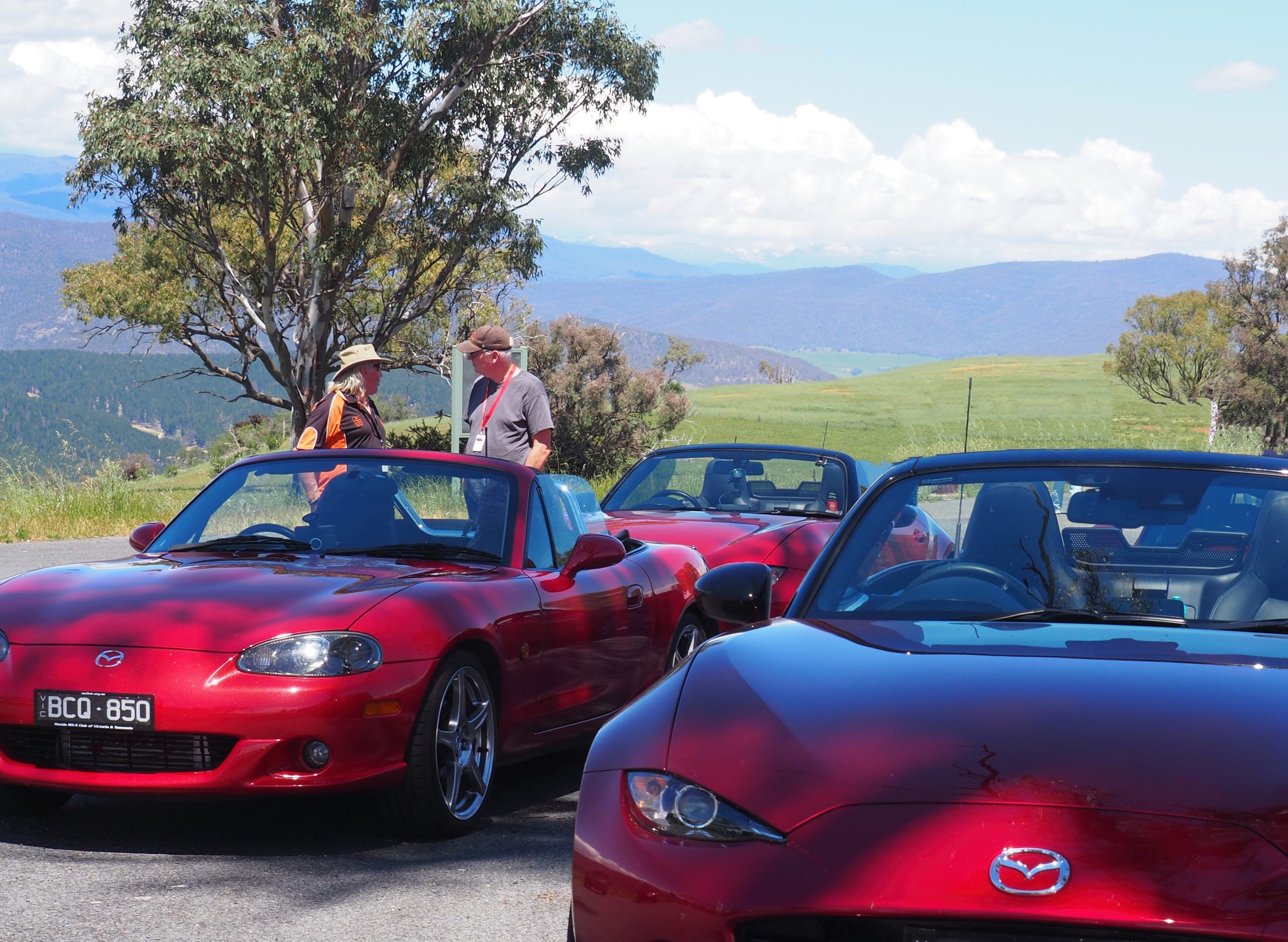Download our PDF detailing what to expect on your first track day.
Whilst there’s no such thing as a typical day at the track, the following is a rough description of what commonly goes on:
 The first thing to do when arriving at the venue is to find yourself a garage, carport or other parking area in the pits to store your things (garages are sometimes only available at a cost).
The first thing to do when arriving at the venue is to find yourself a garage, carport or other parking area in the pits to store your things (garages are sometimes only available at a cost).
Then make your way to the check-in office (which might be in a garage or scrutineering bay). Have proof of your Motorsport Australia Speed licence and current Club membership, and a couple of dollars if you need to buy competition numbers or a blue triangle to stick on your car. Also, pick up your Dorian or Mylaps device to be attached to your car to facilitate electronic lap timing.
Prepare your vehicle by removing all loose items from your car, including the contents of the glove box and centre console, floor mats, Melway, spare tyre, jack and other tools. Stick your competition number to the car in the specified location, and the blue triangle on the panel over the battery (in your NA or NB, it’s in the boot). Install bumper mounted tow hooks if required, and attach your Dorian or Mylaps timing device in the correct orientation with tape or the custom bracket. See the event’s Supplementary Regulations for requirements for attachment of cameras, phones, dashcams etc.
 Scrutineering of your car and personal safety equipment may vary depending on the organising club; ranging from self-scrutiny against a checklist to physical presentation of the car at the scrutineering bay for a scrutiny check.
Scrutineering of your car and personal safety equipment may vary depending on the organising club; ranging from self-scrutiny against a checklist to physical presentation of the car at the scrutineering bay for a scrutiny check.
In cases of self-scrutiny, the organising club scrutineers will typically conduct spot audits during the day to confirm compliance. Check the Supplementary Regulations of the event for details of scrutineering. You should check your car against the checklist prior to the day of the event to ensure any issues are corrected.
The scrutiny check includes (amongst other things) fluid levels and leaks, tyre condition and legality, wheel nuts, brake lights, battery security, helmet condition and compliance, extinguisher condition and date stamp, and drivers apparel. Generally, a small windscreen sticker is provided to indicate completion of check-in and scrutineering compliance.
Keep your ears open for a summons to the drivers’ briefing. This is mandatory for all drivers to attend, and here you will be given further information about what will happen for the rest of the day. The Clerk of Course will emphasise the requirements for the safe and efficient running of the day. You will be expected to have read and understood the Supplementary Regulations published by the organising club at the time of entry.
The field will typically be divided up into four or five run groups based on lap time, with each group being allowed a 10-12 minute session in run group order. Keep track of which run group is on the circuit so you can get your car on the dummy grid prepared for your next session.
The first session of the day is a practice during which first-time drivers can take an experienced fellow driver as a passenger for coaching or instruction. If you’ve never seen the track before, it’s a good idea to take an experienced driver with you to show you the circuit, and/or let them take you around so you can see the track layout, and get an idea of the braking and apex points.
Line up in the dummy grid prior to your session in order of expected lap time. This way the faster cars will pull away from you and the slower cars will fall behind you, giving you a clear track until you are potentially lapped by the faster cars. Keep an eye on your mirrors regularly. Hold your line through corners as it is the passing driver’s responsibility to pass safely, and do not make unexpected or sudden movements across track or off the regular race line.
Remember, you don’t have to go flat out straight away. Take plenty of time to learn the circuit safely. The best way to ruin your day is to have an accident, damaging your car, yourself, or the instructor who has placed his life in your hands. Whilst you may be able to correct small mistakes, if you are past the point of no return then get on the brakes as soon as possible: if an accident is inevitable, best that it happens at the lowest possible speed. If you can safely return to the track, wait until there is a break in the traffic, then stay off the racing line for a while to minimise the spreading of dirt and crud you have picked up.
If your car breaks down or becomes bogged off track, leave your helmet on, hop out when it is clear to do so, and make your way to the nearest safety barrier. Stay behind the barrier/tyre wall until the session is complete, when the safety marshals will come to tow your car out. NEVER walk across the track –– a safety vehicle may be approaching from the opposite direction.
Later sessions (on competition days) are timed, and consist of a warm-up lap, three or four timed flying laps, and a cool-down lap. The first lap being untimed, don’t go flat out. Get some heat into your engine and tyres, and space yourself out from the other cars so you will have plenty of space around you by the time you start the timed laps. Once shown the chequered (or red or black) flag, slow down gently, ideally staying off the brakes so they have time to cool down (they cool better when the car is moving than they will when parked). You don’t have to slow to a crawl though, getting back to the pits quickly allows the next group to get out as soon as possible, so everyone gets more track time.
Once back in the pits, park your car and leave it in gear to stop it rolling away. Don’t pull the handbrake on, as your brake rotors will still be hot, and clamping the pads to the rotors causes uneven cooling which will warp them easily.
Check the timing board or Natsoft Race Results for posting of results during the day. Have a rest, drink some water, munch a snack, and get ready to do it all over again. We hope you had fun.
If you have any more questions feel free to contact your Chapter Captain – Motorsport.
This Page Last Updated on 28-07-2025 by Murray Finlay








